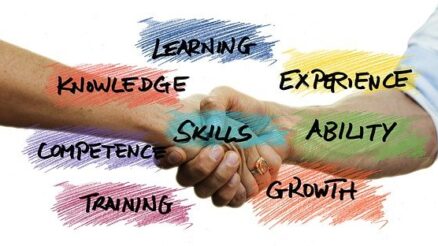This article published at HBR defines workplace culture as “culture is like the wind. It is invisible, yet its effect can be seen and felt. When it is blowing in your direction, it makes for smooth sailing. When it is blowing against you, everything is more difficult.”
So if business leaders want to make their organization an agile and adaptive to transformation then culture needs to be changed.
Employees don’t embrace change; they are often reluctant to accept change.
But only those organizations will survive in continuous changing business world which are adaptive to change and have a vibrant workplace culture.
But changing workplace culture is one of the most difficult challenges.
Why?
Because culture is not a tangible thing. Workplace culture means leadership, values, goals, policies, communication, work habits and ethics.
Changing workplace culture is something that can’t be ensured through an executive memo. The authority can only ensure compliance but it can’t win hearts and install new habits in employees.
This blog post offers seven powerful tips on how to change workplace culture.
1. Define culture as per vision and values
The first and foremost important task for organizational leaders is to define vision, mission and values of their organization. The next step is that how to make these core believes aligned with everything that comes under workplace culture.
They should make conscious effort to translate workplace values into their behaviour and action. And they should also regularly communicate workplace values to team members during meetings and informal events so that these values remain at forefront of employees.
Nowadays employees are even more concerned about workplace culture. They’re more comfortable at workplace where organizational vision, values and culture meet their expectations. Same holds true for organizations that they should hire and retain those employees which are in sync with workplace culture.
2. Change employees’ habits
Recent research shows that organizational change fails not due to poor strategy and technical resources. But many change initiatives are not successful due to failure to change human resource habits.
The same research also suggests three factors which are helpful to make change in habits of employees at workplace. First, employees need to know what are new priorities and why these are required.
When there is absolute clarity on these priorities then it is easy to follow and translate these into actions.
The next step is how to sustain these actions. This is where employees’ habits are formed. Installing new habits take time and leaders should be patience about the time required to build habits.
The third factor is that how workplace systems and policies support new priorities and habits of employees. If there is no system support then all priorities and habits are just unrealistic wishes.
3. Make transparent HR policies
It’s human resource which makes or breaks workplace culture. So, it is crucial to make a transparent HR policy which involves hiring new talent which fit with desired culture and retaining of those human resource.
A HR policy must ensure that performance reviews, benefits, bonus, promotion and progression of human resource is done in a transparent manner.
4. Give due recognition to team members
People want to be recognized for their tasks accomplished. Everyone wants to do purposeful job which gives a sense of achievement and ownership.
This is even more important when employees are showing commitment to new priorities and making strides in building new habits to change workplace culture.
Organizational leaders must give due recognition to those team members who shows positive habits because others will follow them. There should a platform where leaders can celebrate success of other team members. This will also create a healthy competition at workplace which will help to change workplace culture.
5. Establish connections among team members
It’s always important to provide employees and team members with opportunities to build their strong relationship with other team members.
It can be done through celebrations at workplace, social gathering spots at workplace, organizing team building activities
HR should create such a system where they can measure connections and relationship among team members. Employees should be provided with guidance through mentoring to improve their relationship with other team members.
One way of doing this is to make every employee work with their team members in shared palaces.
6. Measure your workplace culture
As it is earlier said that workplace culture is intangible. It’s like a wind which does has effect but can’t be seen.
But it is equally true that things are easy to manage when these are measured.
The first step is to define workplace culture and have a consensus on what constitutes workplace culture. Then some key indicators can be identified to measure that culture.
It’s should be primarily HR job to form a method to measure workplace culture. It can be through periodic surveys, assessments, discussions etc. And findings of such assessment should be analysed without any bias and leaders should take informed decisions to improve their culture.
7. Ensure diversity and inclusion
A positive workplace culture is one where employees from different backgrounds are valued, supported and nurtured. Ensuring diversity and inclusion is a greatest asset for workplace culture.
A workplace with diverse culture makes more agile and cohesive teams. Such workplace culture produces creativity and support innovation. It also boosts morale of employees and gives good reputation to organizations.
Leaders should not only focus on inclusion and diversity in different organizational policies but also, they build capacity to their team on how to embrace diversity and use it for their benefit.
8. Keep it on-going process
Changing workplace culture doesn’t happen overnight. Old habits and employees’ behaviour are entrenched in their mind so deeply that it is not easy to change them. So, it takes time and patience.
Its basic transformation can be done in few months to one or two years but still conscious effort will be required then to sustain that culture.
Leaders should continuously keep dealing with workplace culture to make it more positive and sustainable.
Conclusion
Workplace culture is a complex phenomenon which involves leadership, values, policies, work habits and lot more. It is difficult to build it in a day or two. There are certain ways which helps leaders who want to change their workplace culture. These mainly include aligning culture to organizational values, changing employees’ habits, making transparent policies, establishing connections of team members, measuring culture and ensuring diversity and inclusion at workplace.



